The South Korean cryptocurrency market is making a strong comeback from the "Terra shadow," becoming a force that global investors cannot ignore.
Written by: Umbrella
Recently, two traders in the South Korean cryptocurrency market have become the focus of discussion in the crypto community due to their astonishing performances.
A trader known by the pseudonym Namseokhee has made high-leverage long bets on altcoins on Binance, increasing his long positions from 75 to 105 in just two weeks, with returns skyrocketing from 134 times to 1400 times, all with an initial margin of less than $3,000.
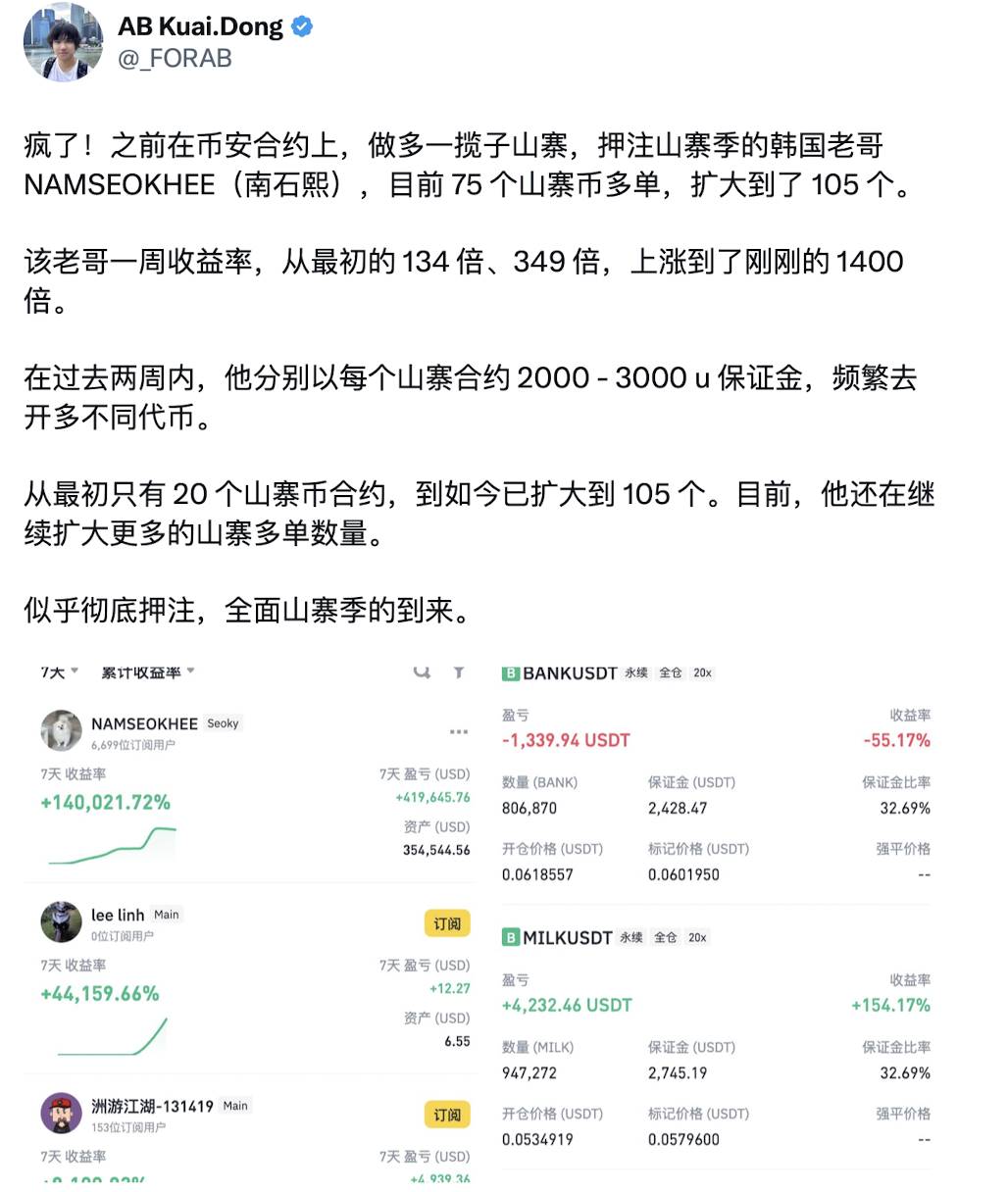
Image source: @_FORAB
Another trader, Ohtanishohei, is a staunch supporter of Ethereum, continuously increasing his long positions in ETH contracts over the past two weeks, with profits rising from $1.57 million to a peak of $3.37 million.
Their dazzling achievements have not only ignited the enthusiasm of South Korean investors but have also drawn the attention of the global market to this vibrant region.
In the past six months, the South Korean market has been mentioned increasingly in the crypto space, and its rise is not coincidental. In 2024, the total asset management scale of South Korea's five major cryptocurrency exchanges surpassed $74.8 billion, with managed assets reaching $73 billion and daily trading volume exceeding that of the two major South Korean stock exchanges.
As the largest cryptocurrency exchange in South Korea, Upbit's daily trading volume once exceeded $10.2 billion, a year-on-year increase of 94.5%. Even more noteworthy is that the Korean won accounts for as much as 37% of global fiat currency transactions in cryptocurrencies, second only to the US dollar.
These figures indicate that South Korea is not only a hub for cryptocurrency trading in Asia but is also gaining an increasingly significant market position globally.
Betting on Altcoins, Nationwide Speculation
When it comes to South Korea, many crypto investors may have a negative first impression. In 2022, the Terra project founded by South Korean trader Do Kwon reached a market value of $40 billion but collapsed to zero due to the failure of its algorithmic stablecoin, resulting in losses exceeding $6 billion for South Korean investors. BTC was affected, dropping from $40,000 in early May to $17,000 within two months.
This incident led to a 30% drop in trading volume on the two major cryptocurrency exchanges, Upbit and Bithumb, and the Korean won's share of global crypto trading fell from 40% to 25%. Along with this decline, South Korea's position in the crypto market also diminished.
Fast forward to the second half of 2024, several altcoins have seen their prices soar after being listed on South Korean exchanges, a phenomenon that continues to this day. Recently, CYBER was listed on the South Korean exchange Upbit, with its price surging over 130% in a single day and trading volume skyrocketing by 500%, briefly surpassing a market cap of $170 million.
This data reflects that the enthusiasm of South Korean crypto investors may far exceed our imagination, as evidenced by the demographic composition of South Korean crypto investors.
According to the latest report from the Hanwha Financial Research Institute titled "Investment Trends in Virtual Assets Among Generations 20-50," among 1,000 financial investors aged 20 to 50, 27% hold cryptocurrencies, accounting for 14% of their total financial assets, and as many as 70% of respondents expressed willingness to invest in cryptocurrencies in the future.
The fervor of South Koreans for cryptocurrencies goes beyond this. According to data from the Bank of Korea in 2024, by November 2024, 30% of South Korean residents had opened cryptocurrency exchange accounts, with two out of ten government officials holding cryptocurrencies.
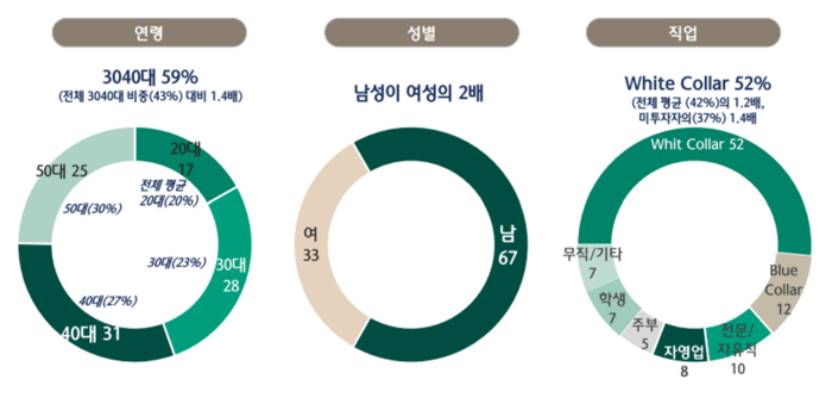
Behind the phenomenon of "nationwide speculation" in South Korea lies the current social background and the government's changing attitude towards crypto.
Currently, young people in South Korea are facing unprecedented social pressure.
According to data released by the Korean Statistical Office, the youth unemployment rate in South Korea is expected to reach 5.5% by July 2025. South Korean youth generally have a pessimistic view of the economic outlook, and with upward mobility almost completely locked, countless young South Koreans see cryptocurrencies as the only opportunity for class advancement.
This also explains why South Korean crypto traders' strategies tend to favor high-leverage trading. In popular cultural works in South Korea, certain classic lines also reflect this social phenomenon.

Image source: Popular South Korean drama "Squid Game 2"
Regarding the South Korean government's attitude towards the crypto market, the biggest positive news for South Korean traders recently is the rise of Lee Jae-myung as the President of South Korea.
Lee Jae-myung is not only a political winner but also one of the staunchest advocates for South Korea's crypto policies. In his commitment to the "Korean crypto industry," he stated that he would promote the legalization of virtual asset spot ETFs, guide large-scale allocations of crypto assets by the national pension fund, and establish a Korean won stablecoin.
The attitude behind these messages points to a common outcome: South Korea is "making a comeback" in the crypto market, and this resurgence may be more intense than ever before.
Tom Lee, the New Do Kwon of South Korea?
The "comeback" of the South Korean crypto market is not limited to policy statements but is also reflected in the actual actions of South Korean investors. The "watchlist" of South Korean investors often includes the following assets:
ETH
In the South Korean crypto market, the crypto gold is not BTC but ETH.
According to the two major cryptocurrency exchanges in South Korea, Upbit and Bithumb, in the past 24 hours, the ETH/KRW trading pairs accounted for 18.06% and 12.1% of trading volume, respectively, with a total trading volume exceeding $1.26 billion. Moreover, Upbit alone recorded an astonishing ETH trading volume of $111.1 billion in July.
This is largely due to Tom Lee, the chairman of BitMine and a Korean-American, who has consistently called for ETH, instilling confidence in South Korean crypto traders.
With a combination of national sentiment, media promotion, and the crypto label, Tom Lee is currently regarded by South Korean crypto traders as a figure comparable to the founder of LUNA, Do Kwon. Even legendary trader Eugene has mentioned Tom Lee in the community.
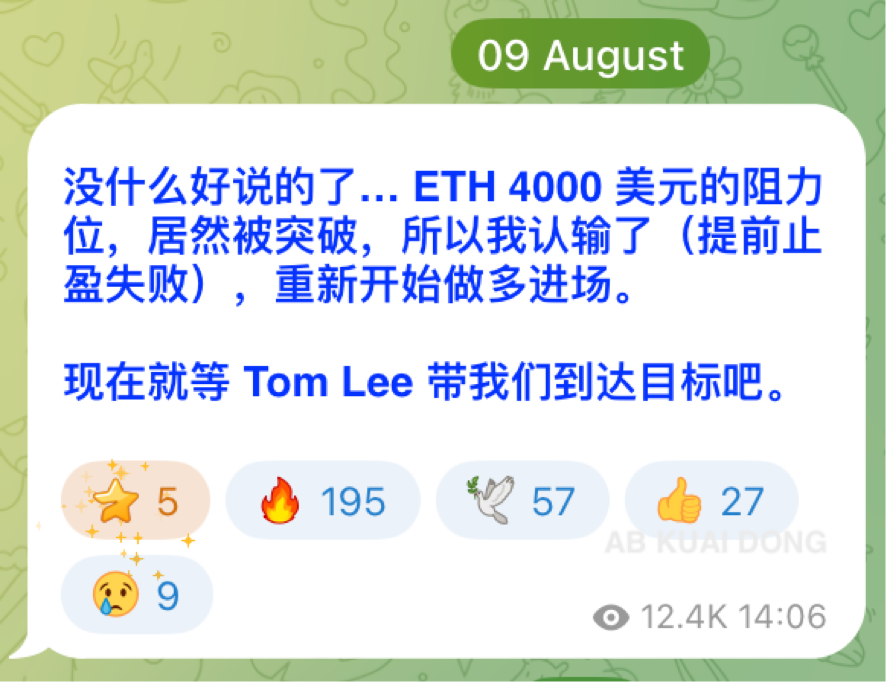
Image source: @_FORAB
BMNR
In addition to ETH, Tom Lee's importance in the eyes of South Korean traders is also reflected in the stock of BitMine, BMNR.
As of August 15, BitMine holds over 1.2 million ETH, valued at $5.3 billion, more than double the second-largest holder, SharpLink. According to data from the Korea Securities Depository, since July, South Korean retail investors have net purchased over $259 million of BMNR, making it the most popular foreign security during the same period.
In the eyes of countless South Korean traders, BitMine has become the operator controlling the rise of ETH, while the US stock BMNR has become a leveraged version of ETH. Compared to ETH, BMNR has seen a maximum increase of 66% since July 1, aligning more closely with the high-risk preferences of South Korean crypto traders.
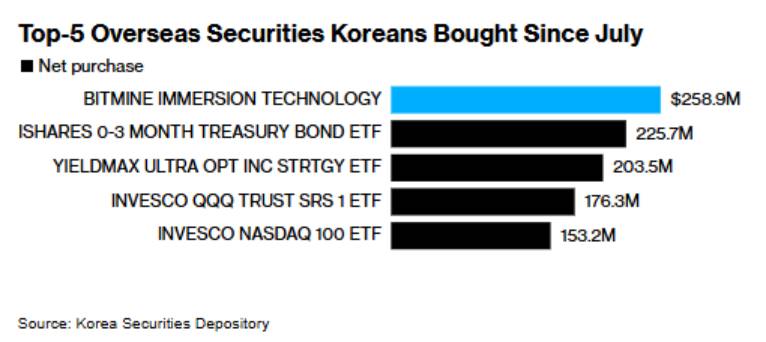
XRP
In addition to ETH, XRP is also a major asset favored by South Korean crypto investors. In the past 24 hours, the total trading volume of XRP on Upbit and Bithumb reached $1.13 billion, just $100 million less than ETH.
On May 26, the XRP/KRW trading pair surpassed BTC and ETH to top the KRW market. Even more astonishingly, at that time, the price of XRP on Upbit surged to $2.65 billion, exceeding the international market price by 3%.
On the other hand, Upbit, South Korea's largest cryptocurrency exchange, holds over 5.9 billion XRP, nearly twice that of Binance. Behind this crazy phenomenon, the SEC's withdrawal of the XRP securities lawsuit and its potential for cross-border payments are attracting South Korean investors, while the Korean won stablecoin policy further boosts its demand, with retail investors generally optimistic about XRP's future potential.
Returning to the Crypto Stage
Driven by popular assets like ETH, BMNR, and XRP, the South Korean crypto market is making a remarkable return to the crypto stage. From retail to institutional investors, from policy to culture, South Koreans seem to have regarded cryptocurrencies as a new engine for national development. However, this "nationwide speculation" and high-leverage trading strategy are not without concerns.
Just yesterday, on August 14, after the US released PPI data, the crypto market plummeted. Namseokhee, who had heavily bet on the previous one-sided upward trend, saw his positions turn from profit to loss, even experiencing the largest historical loss. While such extreme trading strategies are not advisable, the enthusiasm of South Korean crypto traders cannot be ignored.
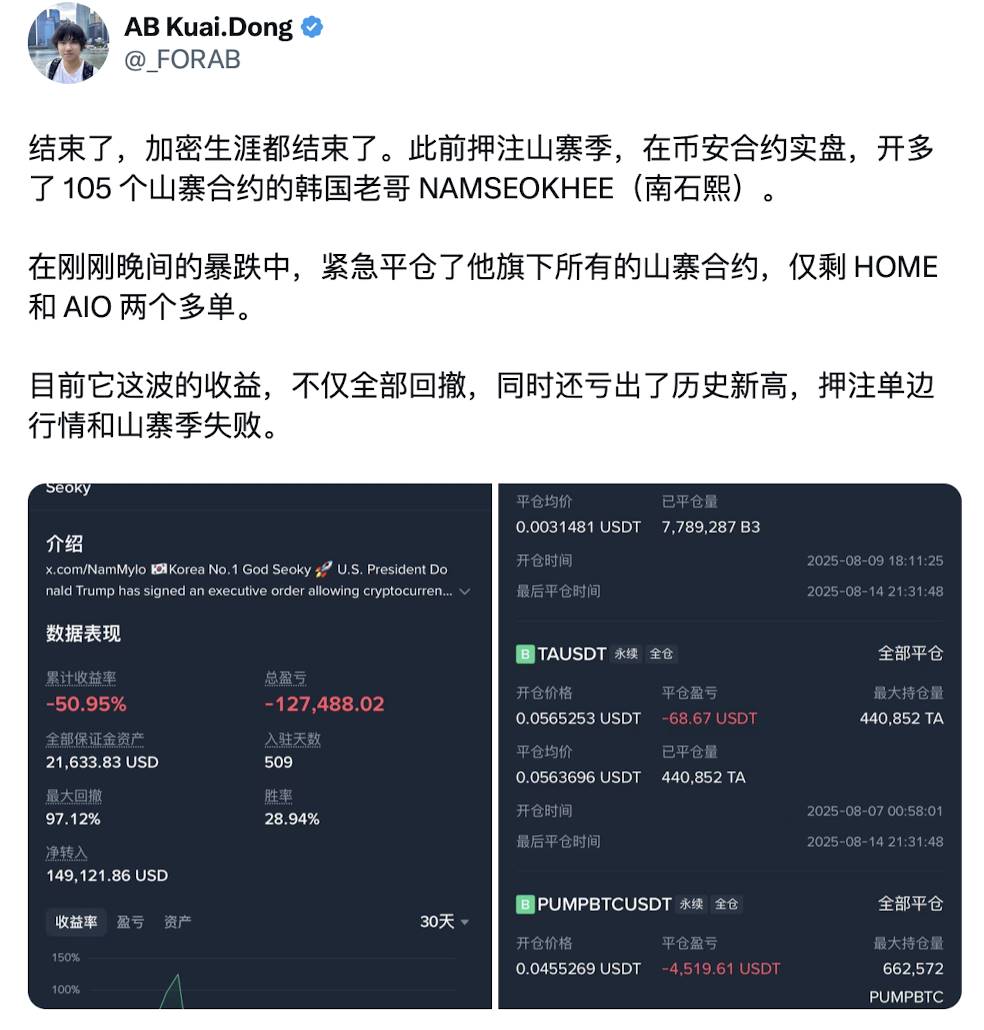
Image source: @_FORAB
In summary, the South Korean crypto market is making a strong comeback from the "Terra shadow," becoming a force that global investors cannot ignore. In the near future, with the popularization of the Korean won stablecoin and the further implementation of pro-crypto policies, we are likely to see South Korea rise to the status of "Asia's crypto capital."
免责声明:本文章仅代表作者个人观点,不代表本平台的立场和观点。本文章仅供信息分享,不构成对任何人的任何投资建议。用户与作者之间的任何争议,与本平台无关。如网页中刊载的文章或图片涉及侵权,请提供相关的权利证明和身份证明发送邮件到support@aicoin.com,本平台相关工作人员将会进行核查。




